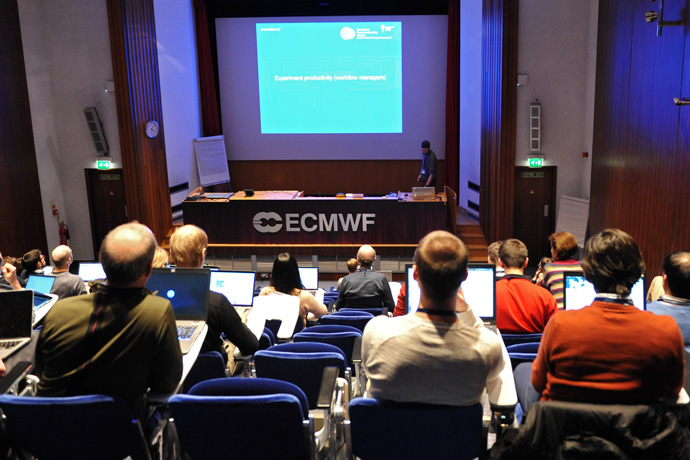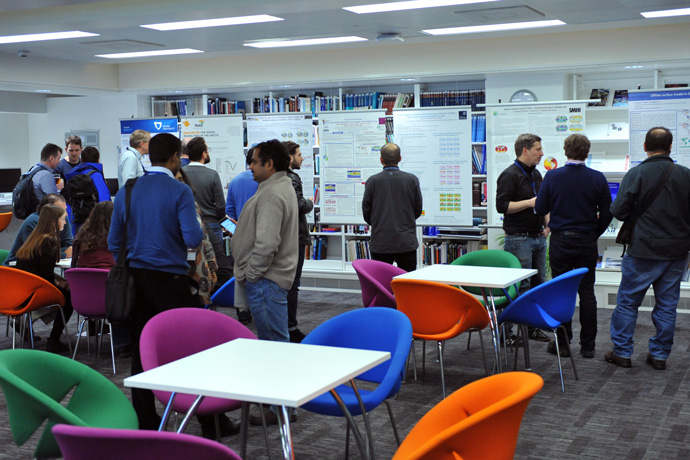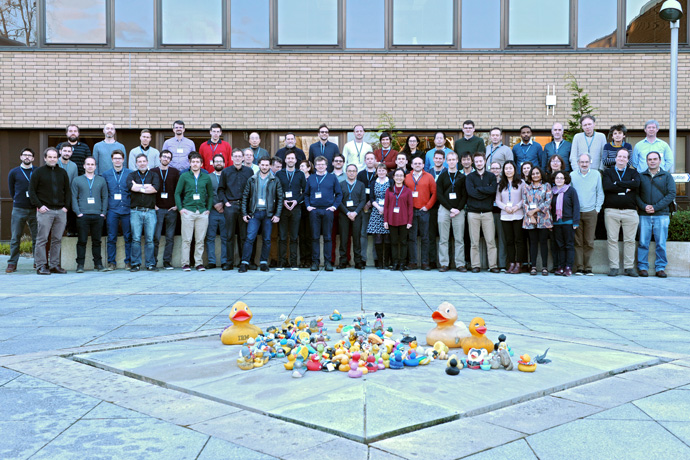

The EC-Earth meeting hosted by ECMWF included plenary sessions and working group meetings.
EC-Earth, a European consortium which aims to provide reliable climate information, is in the final stages of preparing for a climate model intercomparison project expected to feed into the next IPCC report.
Final decisions on tuning the latest version of the consortium’s Earth system model were taken at a meeting of nearly 70 scientists at ECMWF from 29 to 31 January.
The meeting also heard that the next version of ECMWF’s OpenIFS, which EC-Earth is planning to use for the atmosphere–land component of its model, will be released later this year.
Intercomparison project
EC-Earth has developed an Earth system model which takes into account the interactions between Earth system components relevant to climate studies, such as the atmosphere, the land surface, the ocean, sea ice, and vegetation.
The model can be used to investigate a wide range of issues in climate science and in climate projection and climate prediction research.
 The current focus is on EC-Earth’s participation in the Coupled Model Intercomparison Project Phase 6 (CMIP6) run by the World Climate Research Programme.
The current focus is on EC-Earth’s participation in the Coupled Model Intercomparison Project Phase 6 (CMIP6) run by the World Climate Research Programme.
“We have resolved a lot of problems and have now taken decisions on how to address a small set of remaining issues to enable us to start CMIP6 model runs in April,” says Ralf Döscher, the chair of the EC-Earth steering committee.
“We’ll be taking part in a large number of MIPs. Our results will be analysed together with those obtained by other models to establish a range of uncertainty.”
This common analysis is then expected to feed into the next report by the IPCC.
Use of OpenIFS
For the atmosphere–land component of its model, EC-Earth uses a previous version of ECMWF’s Integrated Forecasting System (IFS). The next EC-Earth model version will switch to OpenIFS, which is a more recent, forecast-only version of the IFS.
OpenIFS is licensed to interested institutions across the world for research and training purposes.
“Using OpenIFS will enable us to benefit from better access to model upgrades and to become part of the OpenIFS community,” Ralf says.
The move is also expected to help ECMWF.
“EC-Earth results obtained using OpenIFS can feed back into research at the Centre,” says Glenn Carver, the OpenIFS coordinator at ECMWF.

A poster session at the EC-Earth meeting provided opportunities for informal discussions between EC-Earth and ECMWF scientists.
Plans for the future
Looking beyond CMIP6, Ralf says EC-Earth will work on a next-generation Earth system model.
He notes that, among other things, such models can support the implementation of the Paris Agreement, which aims to keep global temperatures this century well below 2°C above pre-industrial levels.
“After Paris there is a need to investigate mitigation options, in particular the impact of managing greenhouse gas emissions and land use,” Ralf says.
“Without mitigating action we won’t be able to meet the Paris Agreement targets.”

The EC-Earth meeting was attended by nearly 70 people, including several ECMWF scientists who gave presentations on recent developments at the Centre.
